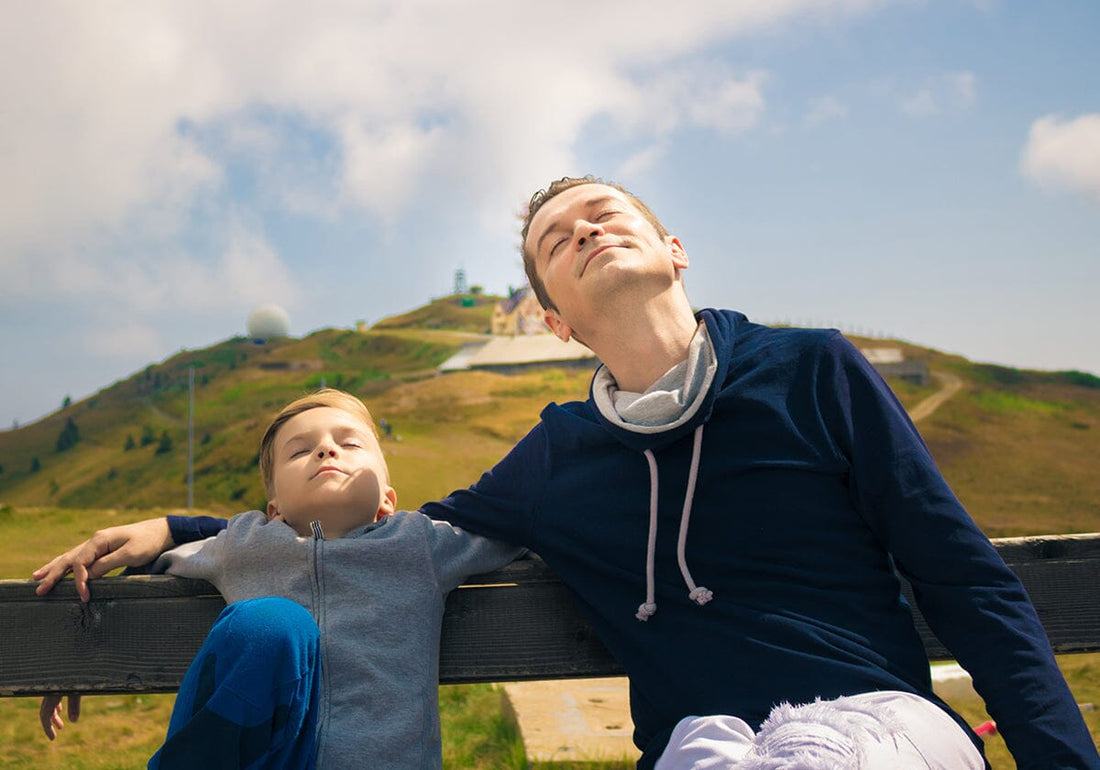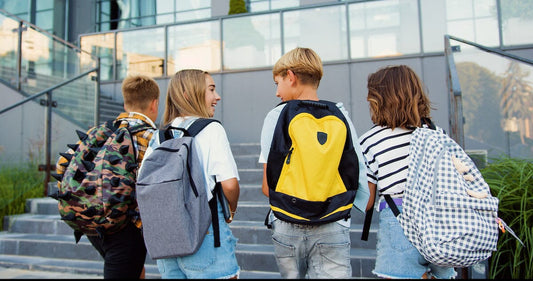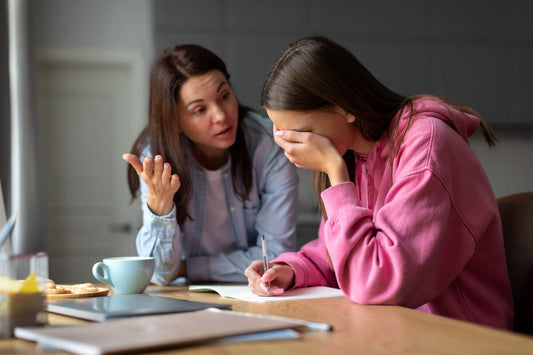Your child comes to you saying their heart is pounding. Their breath is quick and shallow, and they can feel their blood pressure rising. They’re now in fight-or-flight mode, and they have an overwhelming desire to get away from whatever is causing their anxiety at the moment. You know they need to breathe, but why does something so simple seem so difficult for them? It’s because anxiety affects their entire nervous system. And when someone experiences this debilitating emotion, they’ll have to make a conscious effort to focus on their breath. That’s not always easy unless they have some breathing techniques in their anti-anxiety arsenal.
When experiencing anxiety, the body responds via the sympathetic nervous system. The fight-or-flight response evolved in humans as a reaction to a life-threatening event, like running from a wolf or bear. Adrenaline surges through the veins, temporarily giving the body more strength and stamina. The blood vessels contract and the digestion shut down to increase blood flow to the more vital parts of the body.
Unfortunately, frequent anxiety can leave the body living in a constant state of fight-or-flight. When the body has a fight-or-flight response but doesn’t have to escape physical danger, it can leave a restless and irritable feeling. It can cause insomnia and a nervous, jittery feeling. Eventually, it can lead to heart damage or adrenal fatigue.
Breathing for anxiety is a safe, natural way to calm your child’s anxiety. Breathing exercises for anxiety relief can help break the fight-or-flight cycle. They affect the nervous system in a positive way, moving your child from their sympathetic to the parasympathetic nervous system, also known as the rest-and-digest phase.
1. 5-Second Breathing
Great for performance anxiety, this slow-breathing technique, and it works exactly as it sounds. Have your child inhale for 5 seconds and then exhale for 5 seconds. When they count the seconds, it helps distract them from the anxiety they’re currently experiencing. Tell them to not hold their breath at the top of the inhale or the bottom of the exhale. Let their breath gently follow a pattern, like a slow-motion roller coaster. Do this technique for at least 1 minute. But the more time they can spend in this breathing technique the better.
2. 2-to-1 Breathing
2-to-1 breathing is a technique where you exhale for twice as long as you inhale. A long, slow deep breath will slow your child’s heart rate, reduce their blood pressure, and help slow their breath. Instruct them to concentrate on the 2-to-1 ratio, which helps to take their mind off whatever is setting off their anxiety. Inhale for a length of time that’s comfortable, and then double the duration on the exhale. 2-to-1 breathing will help them in a situation where they’re experiencing social anxiety.
3. Sudarshan Kriya
Powerful yet simple, Sudarshan Kriya is a unique breathing technique that incorporates the natural rhythms of your child’s breath to bring their mind, body, and emotions into a more harmonic state. Researchers have found that it decreases clinical and non-clinical anxiety. It significantly reduces cortisol levels, helps with insomnia and lowers blood pressure. It can also give them increased mental focus. This breathing technique includes several steps, so use it as an at-home practice to reduce their overall anxiety. Sudarshan Kriya reduces all types of anxiety, including anxiety attacks, performance anxiety, and social anxiety.

4. Slow Breathing
Breathing exercises don’t have to be complicated. You can simply have your child practice slowing down their breathing, especially if deep breathing causes them to feel more anxious. Have them focus on their breath as they inhale, and then have them exhale as deeply as they can tolerate. They should keep their breath flowing through the inhale and exhale while slowing their breath down to a rate that feels comfortable to them. As their anxiety starts to abate, they can slow their breathing even further. Remind them to listen to their body. They shouldn’t push themselves to breathe deeply until they feel ready. Slow breathing is good for anxiety attacks or any scenario where your child’s anxiety is preventing them from participating in their normal activities.
5. Anxiety Attack Relief
Sometimes anxiety can cause a full-blown attack. During this type of anxiety attack, it’s common for your child to feel as if they can’t catch their breath. They’ll breathe in quick, shallow breaths. What they forgot to do is exhale. If you’re wondering how to relieve shortness of their breath anxiety, you will first need to have them exhale. It may feel counterintuitive to them when they already feel as though they’re not getting enough oxygen. But they can’t breathe in unless they breathe out.
Have them let out an exhale as though they were gently sighing. Once they have exhaled, instruct them to breathe in through their nose and let that breath go into their belly. Then have them open their mouth to exhale. How deeply they inhale and exhale will depend on their comfort level. Have them repeat this breathing technique unless the attack has subsided. If your child is having difficulty following your voiced instructions, try doing it with them as a visual guide.
Additional Tips
You can have your child do most of these breathing exercises anywhere. Try to have them do at least 1 minute, and slowly increase the time as much as they can tolerate. They can lie or sit, whichever feels best for them. Sometimes deep breathing can make them feel even more anxious. In those situations, the slow breathing techniques will be their key. They can try deep breathing once they feel a bit calmer. Incorporate these breathing techniques at least three days per week and when they’re experiencing an anxiety or panic attack.
Apps and Devices
Many apps and devices are available to help your child with these breathing techniques. Some of them simply provide a counter with verbal instructions on when to inhale and when to exhale. Others are advanced biofeedback devices that teach your child to activate their body’s natural relaxation response.
No matter which breathing techniques you (or your child) choose, you’ll find that regular practice should help diminish their anxiety over time. They will help your child’s body move out of fight-or-flight mode and into a more calm and relaxed state of being. All five of Brillia’s pillars help with anxiety, but Pillar 2 is a natural fit with breathing exercises for anxiety relief. Try incorporating meditation and mindfulness after your child is feeling more calm.





